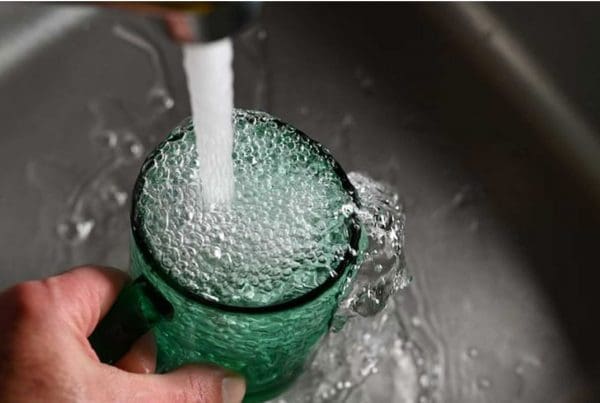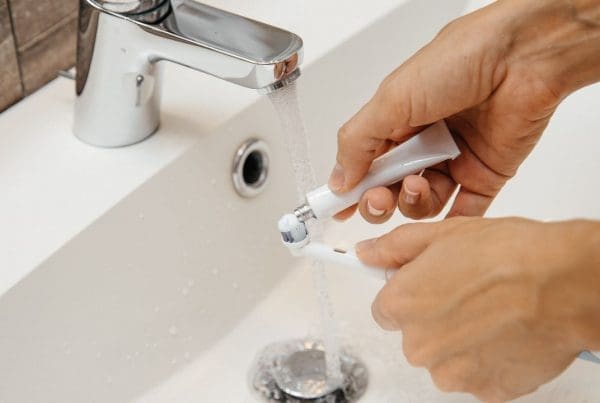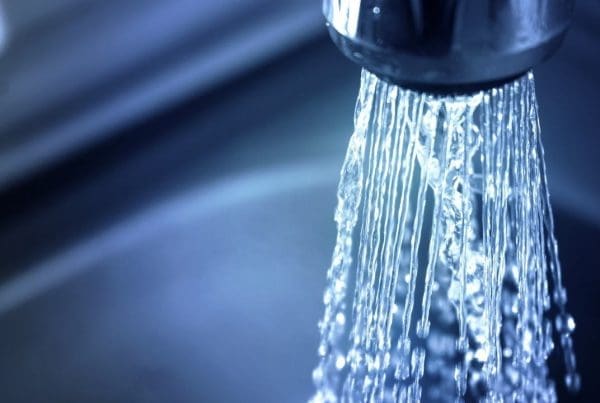Is Your Water Softener Working Properly?
If you have a water softener in your home, you may not think much about it. Once installed and programmed, you probably expect it to last for 10-15 years. This is a reasonable expectation, but few water softeners hit the double-digit age. Unlike other appliances that will clearly show when something is wrong, water softeners are often ever-silent. It’s not shocking to come across a household that has been unknowingly using a faulty water softener for several years. So how do homeowners know if their water softener is working correctly or needs to be replaced? This post will go over some signs that your water softener needs to be checked out and maybe replaced.
Water Softener Warning Signs
Look At Your Lather
If your soap, shampoo, or detergent isn’t producing the bubbles you’re used to, it may be a sign that the softener is malfunctioning. Water gets hard as it passes through rocks and soil, absorbing minerals from the environment or man-made  pollutants. Hard water reduces the cleaning capacity of soap. Soap lathers readily with soft water. In contrast, hard water does not produce a good lather, so it is more difficult to wash with soap in hard water. It is also not recommended for bathing, laundry, and laboratory purposes. The minerals in hard water react with soap and affect its cleaning capacity. It’s still possible to use hard water when washing with more soap. The additional soap will no longer be affected by the minerals in the water so that they can clean just as effectively, but you’ll be wasting more soap this way. If it seems like the lather isn’t what it used to be, it’s time to check your water softener.
pollutants. Hard water reduces the cleaning capacity of soap. Soap lathers readily with soft water. In contrast, hard water does not produce a good lather, so it is more difficult to wash with soap in hard water. It is also not recommended for bathing, laundry, and laboratory purposes. The minerals in hard water react with soap and affect its cleaning capacity. It’s still possible to use hard water when washing with more soap. The additional soap will no longer be affected by the minerals in the water so that they can clean just as effectively, but you’ll be wasting more soap this way. If it seems like the lather isn’t what it used to be, it’s time to check your water softener.
Scope Out Soap Scum
Hard water and soap produce a curdy precipitate called soap scum. Hard water has a high concentration of dissolved minerals like calcium ions and magnesium ions in the form of dissolved salts, and the soap contains sodium salt from stearic acid. In soft water, this sodium dissolves quickly, but in hard water, it binds to the minerals and produces insoluble calcium or magnesium stearate, also known as soap scum. It can damage fabrics and makes clothes dingy and scratchy. It stains bathtubs and toilet bowls and can damage plumbing fixtures, including faucets, drains, and showerheads. It produces build-up in your hair, so your hair looks dull and rough. Soap and hard water can leave a film on your skin that can cause irritation and prevent the proper removal of bacteria. Ergo, if you start noticing scale buildup on your faucets, sinks, or dishes, it’s probably time to check your water softener.
Furthermore, limescale formation worsens in piping systems. Continuous passage of hard water in pipes will leave limescale residue that piles up over time. If you’re not careful, it might even block and damage your household’s pipe system.
Examine Your Epidermis
If you’ve ever felt that no matter how much you moisturize your skin or how dutifully you care for your hair, neither feel quite as you’d like them to, hard water could be to blame. Hard water is not just responsible for scale-studded kettles and sluggish dishwashers, and hard water can irritate even the oiliest of scalps. Even if you think you have very fine hair that has to be washed daily to avoid it looking greasy, the hard water can dry your scalp out to be the point where it becomes dehydrated and oily. Likewise, if your scalp is already on the slightly dry side, hard water can push it over the edge into the flaky territory. Hard water also makes the hair flat because it erodes the hair elasticity and leaves the hair very rough as it lifts the cuticle. Minerals being left to dry on the skin may clog pores and cause dryness, triggering breakouts, flaking, and itching. If your hair, scalp, or skin starts to feel drier or itchy, hard water may be blamed.
Sudden Salty Savor
If you notice a sudden change in the taste of your water, it could portend a problem with your water softener. It could be as simple as cleaning the resin and replacing the salt, and it could also be a stuck or improperly programmed valve. In any case, your water should not have a salty flavor.
 Pay Attention to Pressure
Pay Attention to Pressure
A sudden drop in the water pressure at your home could be caused by a malfunctioning water softener or filtration system. Water softeners can cause low water pressure due to blockages in the system or a malfunction in the recharging cycles. To check if a water softener is causing low water pressure, look for the bypass valve, which is generally on top of the water softener. Turn the bypass valve on and check if the water pressure has improved. If the water pressure has increased, the water softener is causing the low water pressure and may need to be serviced.
Low water pressure can also be caused by “salt bridging.” A salt bridge is when the salt forms a surface crust spanning the water in the brine tank. This over-crusting of the salt layer causing a salt bridge can be caused by high relative humidity or using the incorrect salt type.
In most cases, you can use hot water or a standard household broom to break up the salt bridge and see if the water pressure improves. You will probably notice the salt level reduced when the bridge is broken up. Once that happens, try to remove the larger chunks of the salt bridge from the tank as they will not dissolve well. To avoid this problem in the future, only keep your salt tank half full, which will lessen the opportunity for another salt bridge to form.
Work With the Water Experts
Being educated about the common problems associated with your water softener and purification system makes you better equipped to deal with any issues you may face. If you have questions or issues with your water quality, please contact C and J Water and talk with our water experts.


 Pay Attention to Pressure
Pay Attention to Pressure

